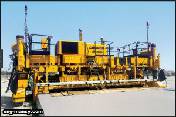3d Technology Simplifies Concrete Paving Operations 4 From 8

You are Leapfrogging at least four of these guns as you pave so you don’t stop. You always have one ready to go in front.
” And the closer together you keep them, the better.
“If you minimize your distance to 300 or 400 ft., you get better accuracy.”
Over the past three years, the technology has proven very reliable. “We have had very few issues where we have actually had to stop and make an adjustment,” says Niederriter.
you also save on labor.
“You eliminate setting hubs and you eliminate a string line crew,” says Niederriter. “You usually have a three- or four-man string line crew So you are saving at least three or four men on a typical paving day.
But if it was just the labor, it would probably be a long time before you would recoup that cost. “
There are other advantages.
“We have found our yield is better,” says Niederriter.
“we don’t waste as much concrete.”
But a big factor has been opening up the jobsite.
“It reduces the amount of haul roads because we don’t have strings every where,” says Niederriter.
“It saves us some grading and some haul road work because we are able to get access to dump the loads.
In some cases, when we are using a dowel bar inserter, we can dump right in front of the paver.
It really helps because nothing is in the way.”
Valley View, OH-based Anthony Allege Cement Contractors Inc.
Performs concrete paving, asphalt paving, underground utility work and site work, including heavy highway, airport and sewer work.
“When we are in town, we probably perform 80% of our own site work,” says Joe Allege Jr.
The company is no stranger to 3D technology.



